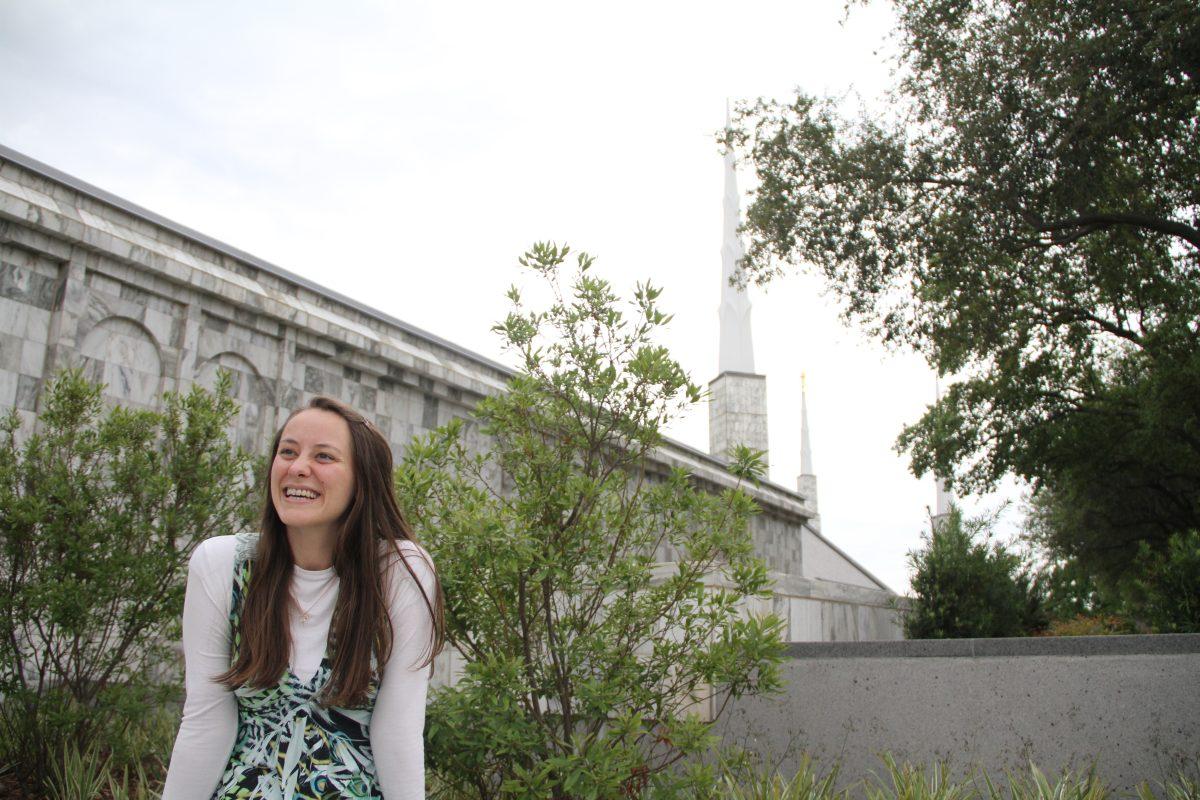Mormon senior finds peace, happiness at temple
Editor’s note: This is the fifth part in a five-part series.
The towering white marble walls of the temple of the Church of Jesus Christ of Latter-day Saints in Dallas are covered in crawling gray veins that hold special meaning for interdisciplinary studies senior Mikaela Johnston.
“I just think how that is kind of symbolic of the body of people,” she said. “We’re all different and none of us are exactly pure white, but we come together to make this beautiful structure, and you can take that in an analogy as your family unit. You can take it as the body of church members, recognizing that out of many veined, imperfect pieces comes this amazing whole that has great power within.”
For Johnston, the changes in her physical surroundings impacts the state of mind she assumes while praying.
“We’re creatures made of both the spiritual and the physical, and so when we do something physically, that affects where our minds are and where our spirits are,” she said.
In the temple, which is located in a secluded, forested area nestled in Dallas, Johnston said she comes to know God and His plan better. She said the area is a place for quiet contemplation and deeper understanding.
However, it’s not just the walls that hold meaning for Johnston. The golden statue on the temple’s premises represents the angel Moroni, who Latter-day Saints believe is the guardian of the golden plates, which were the inspiration for the Book of Mormon.
“He represents the message of joy, good news and the heralding, and he’s one of the potent symbols of the powerful things that we know and sometimes take for granted in our lives,” Johnston said.
The interior of Mormon temples is primarily white décor with pictures of Christ adorning the walls. The local flora is usually represented, with pictures of bluebonnets on the walls of the Dallas temple and desert landscapes in the temple in Idaho that Johnston attended when she lived there.
Upon arrival, worshipers are expected to change into all-white attire at the temple. It’s to represent oneness, Johnston said.
“We’re all God’s children,” she said. “We’re all pure, we’re all equal. I love that part because you can take a moment to breathe, to change into the white and resettle yourself.”
Just as the temple brings Johnston closer to God, church meeting houses, another place she visits to observe her faith, bring her closer to the Mormon community. They offer a place for a congregation to host recreational activities, cultural celebrations and religious classes.
“When they’re kept clean, when everyone comes there and they bring their own happiness to it, there’s a good feeling there,” Johnston said.
Johnston attends church meetings every week and previously took part in the young, single adult congregation. After getting married in the summer of 2015, she and her husband have joined the family congregation and teach the 3-year olds.
“We believe that the central unit in the eternities, this life and after and forever, is the family,” she said. “We believe that we’re not just God’s creations, but literally His spirit children.”
Johnston said the church reinforces the family values that she and her husband practice at home. They both do family scripture study every night, because she said they both believe the home is the second closest place to heaven, next to the temple.
Johnston is active in the temple, the church and the home in observing the tenets of her religion because she said they all serve a different purpose and offer a different perspective.
“Sunday meetings are to share with everyone who wants to come and to learn and to feel that joy, and, (in) the temple, you feel the love of God and your relationship (with) Him.”







